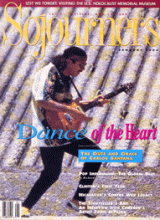Let there be light
Let there be joy
Let there be love and understanding
Yes, this is the Kingdom within
still you know
sometimes I miss seeing and feeling
the spirits dancing in the flesh.
- Carlos Santana
Within the community of faith artists have a very specific role. These creative channels of God speak the truth in ways that resonate with our own inexpressible longings, hopes, and joys. God offers them as gift to us.
In the community of faith, theologians define realities and provide a language for God; artists push and stretch this language and challenge commonly held notions of what is. Artists turn up the soil of our souls, preparing us for transformation.
The vocation of the musician - like the poet, the painter, and even the mystic - is a call to push at the edges of what has been revealed, always showing life to be more abundant than otherwise thought. The musician is a messenger of God who continually works the ocean of the heart - fishing for the expression that perfectly conveys the revelation of God at that moment in that place. What results is a new creation, a new revelation - something that always takes us a little farther along in the knowledge of ourselves, our neighbors, and God.
Art has the power to transform the living. It helps us transcend the obstacles and barriers in our life that hide God from us. Artists are midwives in the passage to a new world.
STEPPING OUT OF the elevator on the second floor of Washington's Wyndham Bristol Hotel, we are hit with the clear, sweet smell of incense. The aroma becomes stronger as we make our way toward Santana's room, overcoming us but also settling our spirits.
Read the Full Article
